Looking for an active holiday without having to spend hours in your car to get there first? The Rupel Region will most definitely surprise you. Here you’ll hike or cycle through beautiful natural areas, authentic little towns and a whole lot of industrial heritage. Trot Op! went and took a discovery tour.
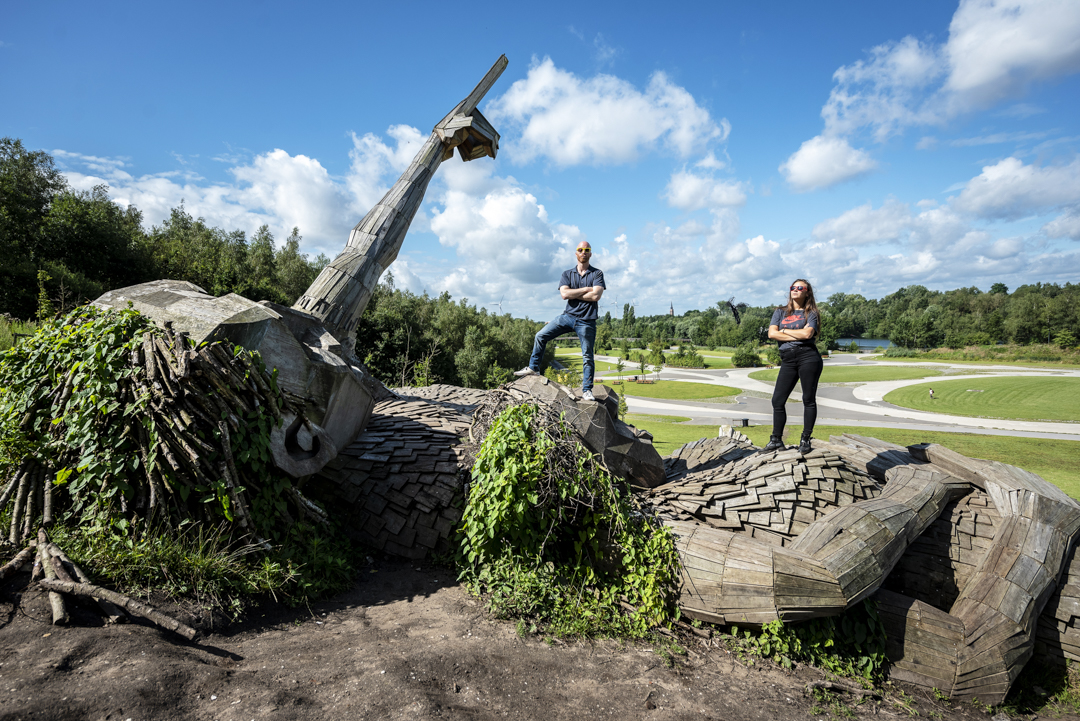
Well dear friends, I don’t know about you, but until recently the Rupel region was something I drove through as fast as I possibly could on my way from Antwerp to Brussels. This I did on the absolutely horrid A12 – also known as the poor man’s E19. This is a road pretending to be a freeway, but where you’ll wait in front of a traffic light every 500m, surrounded by an army of idiots who just had to take the kids to IKEA that day. My practical experience with the Rupel region was limited to a couple of drunken visits to the Casa Blanca Festival at the Saint-Bernard Abbey in Hemiksem, and wondering whether I’d like Tomorrowland in between naps on my couch. When Toerisme Scheldeland asked me if I wanted to spend the weekend in Boom to explore the area, I honestly wondered what else could possibly be worth seeing there. But because I’m always up for a good challenge, I packed my bags and my cheerful bestie Floor and took off. We left Antwerp in the best of moods, just to arrive at our destination a mere fifteen minutes later. Life is for the fast.
What to do in Boom: 8 adventures in the Rupel region
And look: as soon as we managed to get off that rancid road, my prejudices melted like snow in the sun. The Rupel region is surprisingly pretty, and has way more on offer than you might think at first. The Rupel River originates near the town of Rumst, at the point where the Nete and the Dijle merge; just to empty itself in the Scheldt a mere 12km further down the road. This makes it the – write it down for your next school quiz – shortest river in Belgium. The presence of all this water makes for an interesting landscape of open vistas. Cyclists in particular will enjoy it here. Just follow the local cycling network’s signposts and you’ll ride from park to park and from bar to bar. There’s lots of history to discover as well. For hundreds of years, clay was dug out of the ground here to make bricks. This industry transformed the whole area, and a couple of the main sites can still be visited today. So let’s get down to business, and take a look at the eight most exciting things to do in the Rupel region. Hold onto your butts folks: it’ll get wild!
1. De Schorre: go troll hunting at Tomorrowland



Throughout the last two decades, De Schorre grew from a more or less anonymous provincial domain into one of the most renowned dance meccas on the planet – be it for just two weekends each year. This is of course due to Tomorrowland setting up shop here, gradually changing the look of the whole park as well. Nowadays it looks so nice it’s more than worth the visit even without the festival taking place – corona, you know. There’s plenty of sports to try out (like climbing the impressive adventure tower), you can check out the Velodroom cycling museum right next door or you can rearrange your chakras by splashing in the mud on the bare feet path. The most known and possibly most fun addition to the park might be the giant wooden trolls made by artist Thomas Dambo. You can go and look for them in a dense forest, walking over plank bridges. Seven in total can be found, and one of them is located on the meadow where they normally set up the main stage. Wonderfully made and an exciting adventure, for small children as well as Floors. www.deschorre.be
2. Explore the Rupel by boat

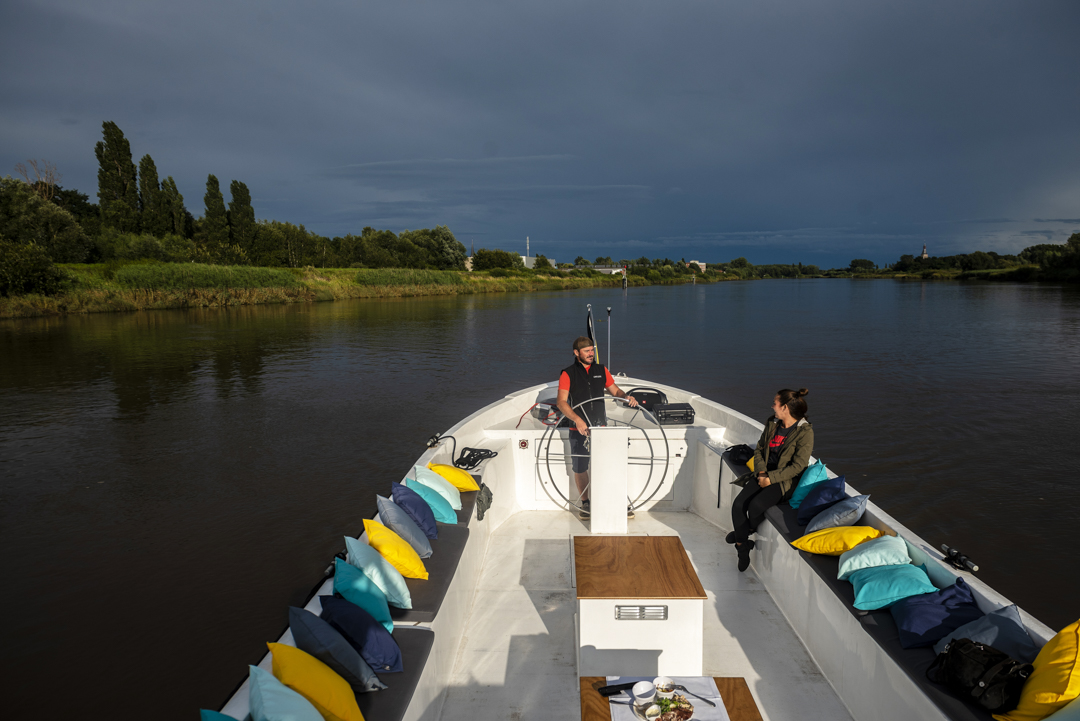

Did you know you can navigate the whole Rupel River – yes, the full 12km – by boat from Boom? Head to the promenade at Trattoria Kaai, where Captain Christophe Sepot will be waiting for you (after you’ve booked him of course) in an open boat full of colourful pillows. After getting some snacks (or booze: no judgement) from the restaurant, you’ll get on board and leave the town centre behind to float past completely deserted green banks instead. It’s the perfect way to end the day in style, with the setting sun warming your mug. Christophe is an interesting dude by the way. He walked a 100km backwards and crossed the Atlantic Ocean with a buddy in a rowboat. This took them 109 days, but he talks about it like it was a Sunday afternoon stroll. It made us fantasise about all the other things he might have done without telling anyone. Crossed the Sahara desert in a speedo with no sunscreen? Check! Swam the whole length of the Amazon River pulling two indigenous tribes all the way to Manaus in canoes? Why not? Flew a WWI biplane to the goddamn moon and back while blindfolded? It’s an actual possibility! www.samenvaren.be
3. Sail to an island full of cows


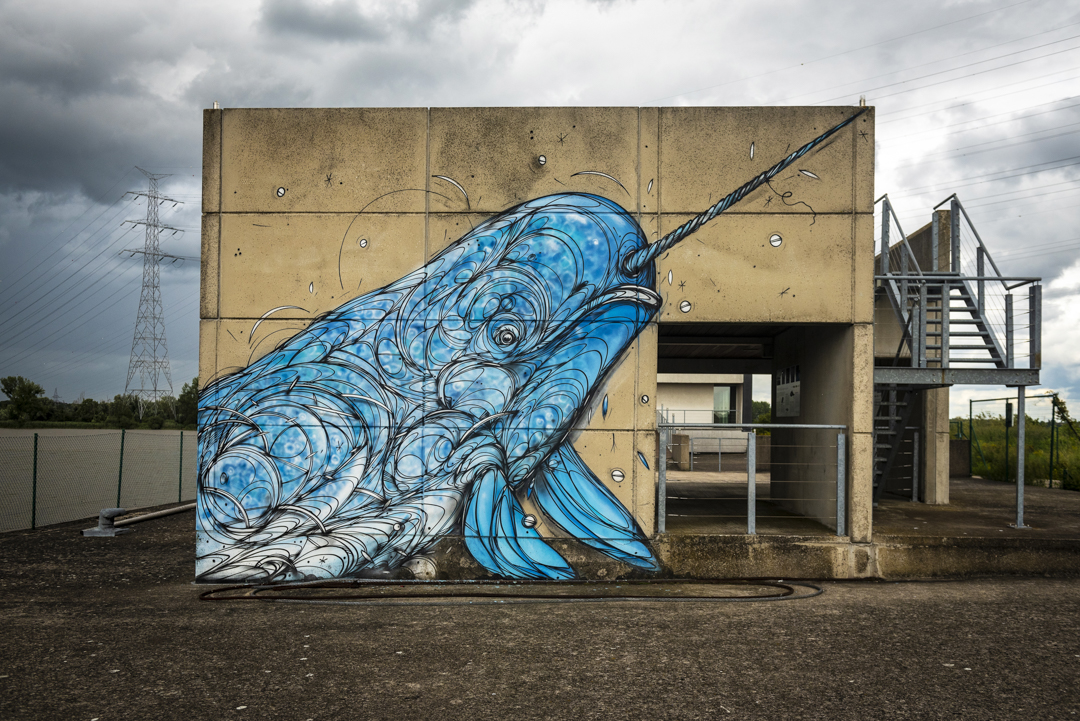
There are multiple nature reserves to visit in the Rupel region. The most unique one to us was Noordelijk Eiland (“Northern Island”). This is an island (yes, really) full of ponds, heather flowers and sand dunes, located between the Scheldt, the Rupel and the Sea channel. You can only get there on the ferry going back and forth every 30 minutes, and it’s perfect for a brisk walk or a short bicycle ride. The isle is full of birds and there are wild foxes and rabbits about. To keep the grass in check, a herd of trusty cows was let loose as well. Five years ago a narwhal banked itself here. This is a magical cross between a whale and a unicorn, usually only found in arctic waters. This means that a specimen swimming all the way to Schelle, just to get lost and wash ashore like some idiot, most likely wasn’t the sharpest tool in the evolutionary shed. Nonetheless a beautiful mural was painted on the sea lock to commemorate this dumb dolphin. It can be visited to pay one’s respects.
4. Learn about the brickwork history EMABB
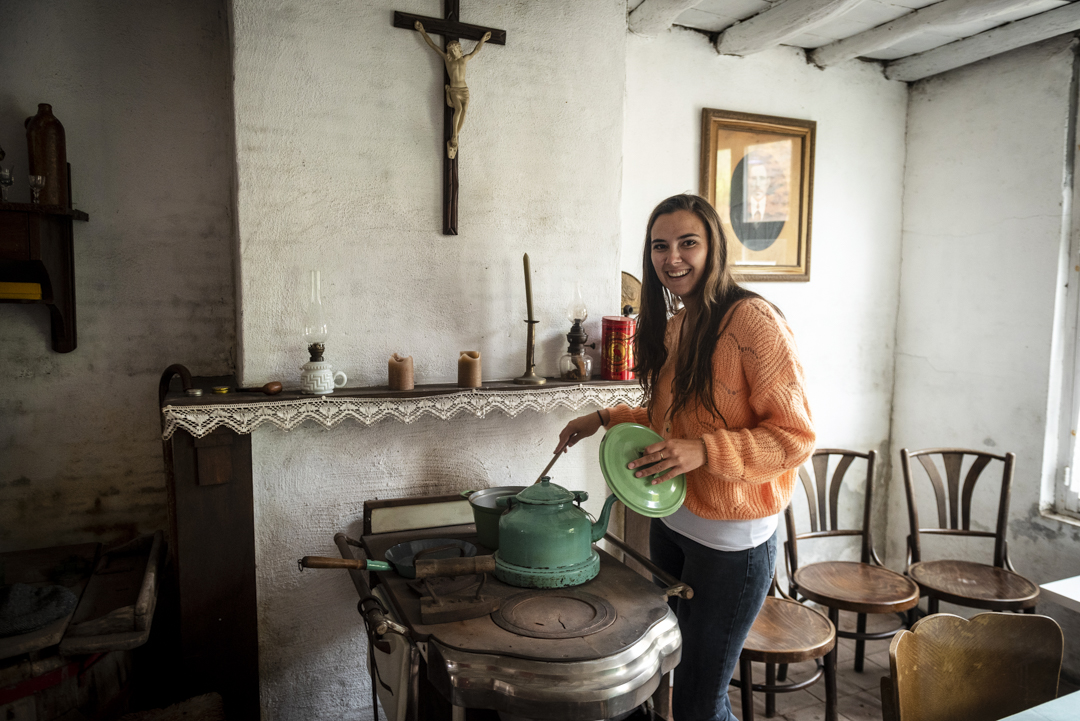

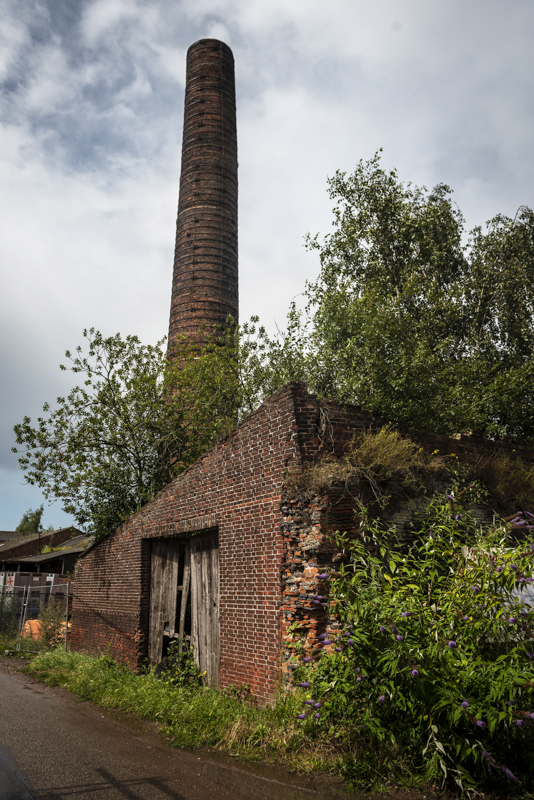
EMABB (or: “Ecomuseum en Archief van de Boomse Baksteen”) is one of two impressive sites in the tiny and authentic hamlet of Noeveren, where the brick manufacturing history of the region can still be explored today. You can check out the buildings at any time of the day, but on Sunday afternoons at 2pm (from April till October) enthusiastic volunteers will guide you around, educating you on how life used to be back in the day. Well it wasn’t pleasant, to say the least. Families lived in the shadow of the chimneys, so they didn’t waste time going to work. Elsewhere in the village – which has only one named street by the way – there’s a whole row of tiny homes with the doors not facing the street side but the former brick kiln. Child labour was everywhere, and the poisonous smog raining down on the surroundings made sure lots of those kids didn’t make it to the ripe old age of fifteen. Poor parents even got a bonus whenever they gave their least favourite child – that would have been me – to the factory to thoroughly clean the narrowest passages in the ovens. One less mouth to feed. The whole site is being restored as we speak, so lots of the buildings are in scaffolding. Everything should be finished by April 2022, including a modern museum and some event spaces above the main brick kiln. www.emabb.be
5. Bake a “Boomse Pan” at ‘t Geleeg



’t Geleeg is the second brick making site still standing in Noeveren, and it’s located just a few hundred meters from the one above. This site was restored years ago, which makes it look like they just closed the gates for the last time yesterday. The grounds are full of brick drying sheds and various kilns, and can be freely explored. The infrastructure here is slightly more modern than what they have at EMABB. The large machine hall still has a whole production line in it, which can be turned on and off with a hellish amount of noise. The volunteers guiding you around here can show you how to make a traditional “Boomse Pan”. These are the large roof tiles the region was known for. The process looks pretty simple but requires quite some expertise. Especially when you know teams of three workers had to finish more than a thousand of them each day. There’s a healthy competition going on between the two museums by the way – correct us if we’re wrong. So watch your words and don’t take sides, or you might get a Boomse Pan to the dome. www.geleeg.be
6. Café De Koophandel: drink local beers in a classic Belgian bar
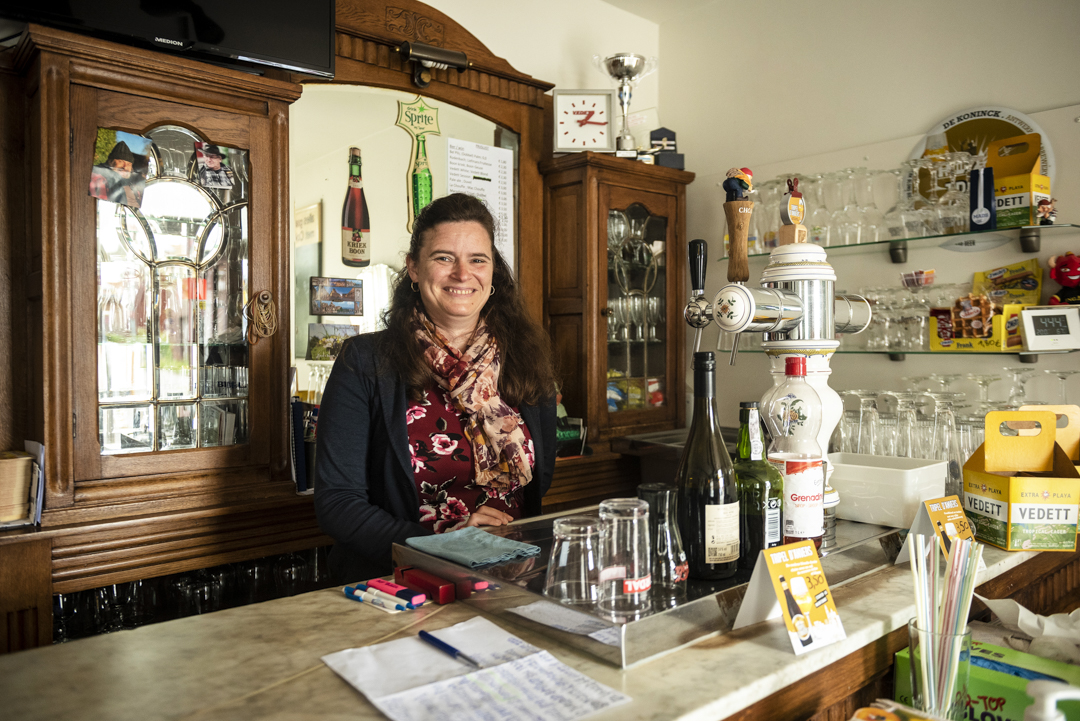
Feel like having a couple of beers in an oldskool Belgian bar? One with an old-fashioned wooden counter, an original jukebox in the corner and a sturdy barmaid somehow unaffected by the crude ravages of time? Grab yourself a seat in Café De Koophandel then, located right next to EMABB in Noeveren. This used to be the place for the brick workers to drown their sorrows. Their wages were handed out here as well. Initially they were put on paper with a pencil, but when the bosses suddenly started using pens instead this caused quite the riot. This was because none of the men could explain to their wives why they were suddenly making a whole lot more money. They used to take care of the beer bill first, to then change the numbers on their pay check so they wouldn’t get hit in the head with a rolling pin after crawling back home late at night. The bar only accepts cash these days as well, meaning no written proof of your own binge drinking adventures will be left behind either. There are lots of local beers to try out here by the way. We especially enjoyed Hellegat Tripel.
7. Enjoy the smaller things in Klein-Willebroek
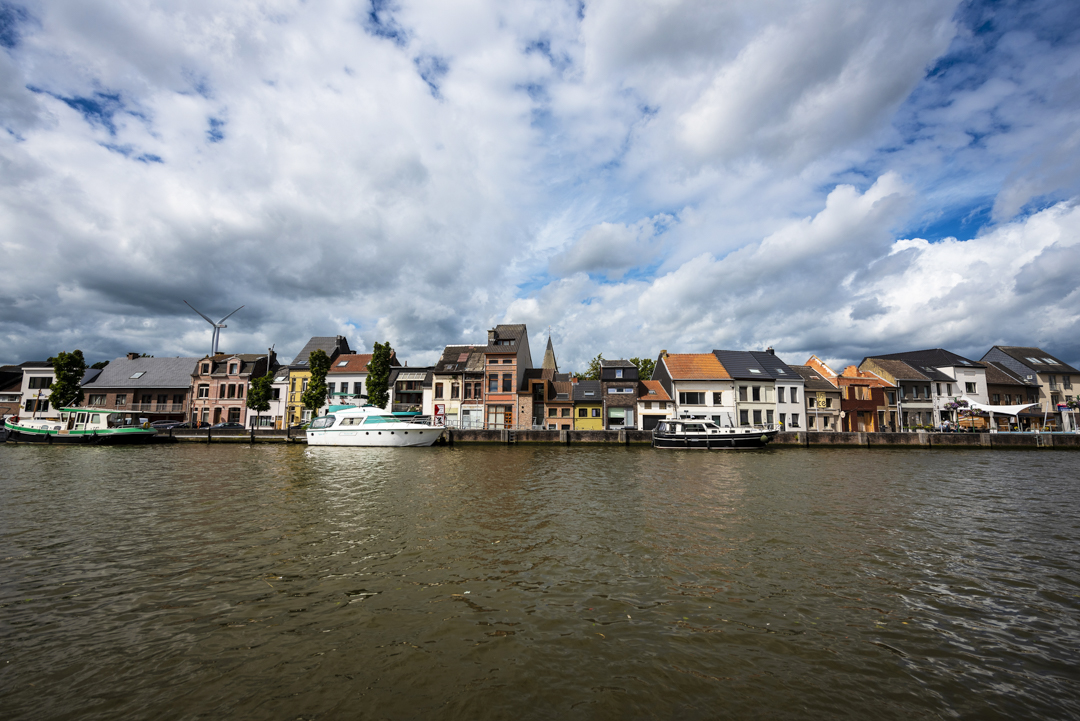
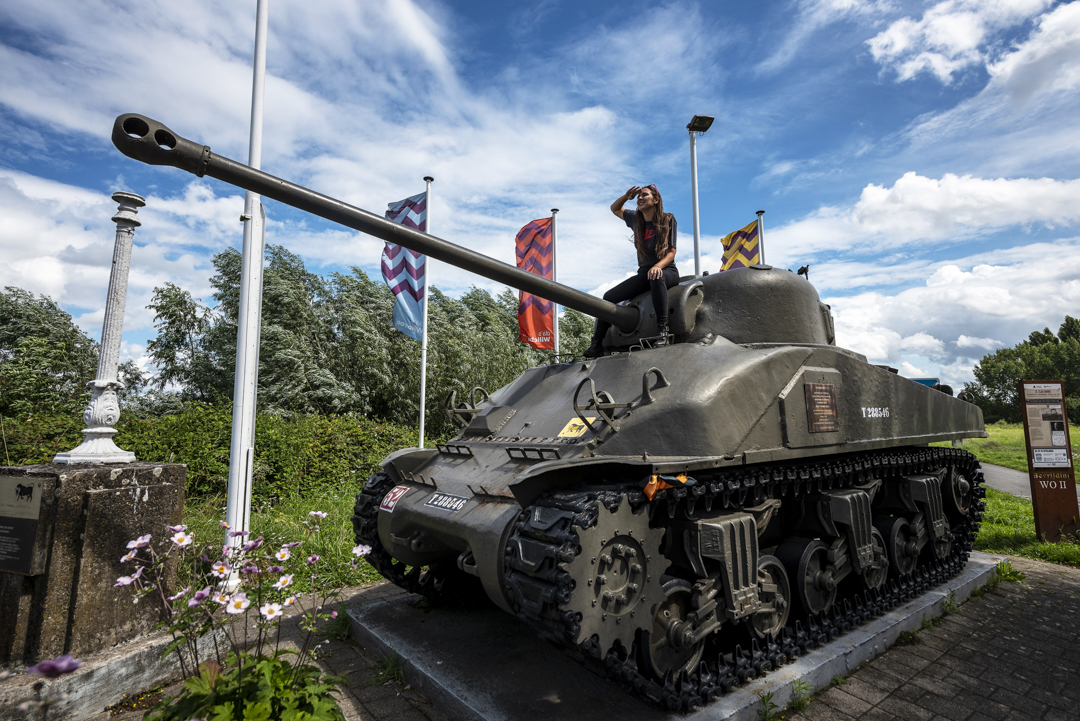
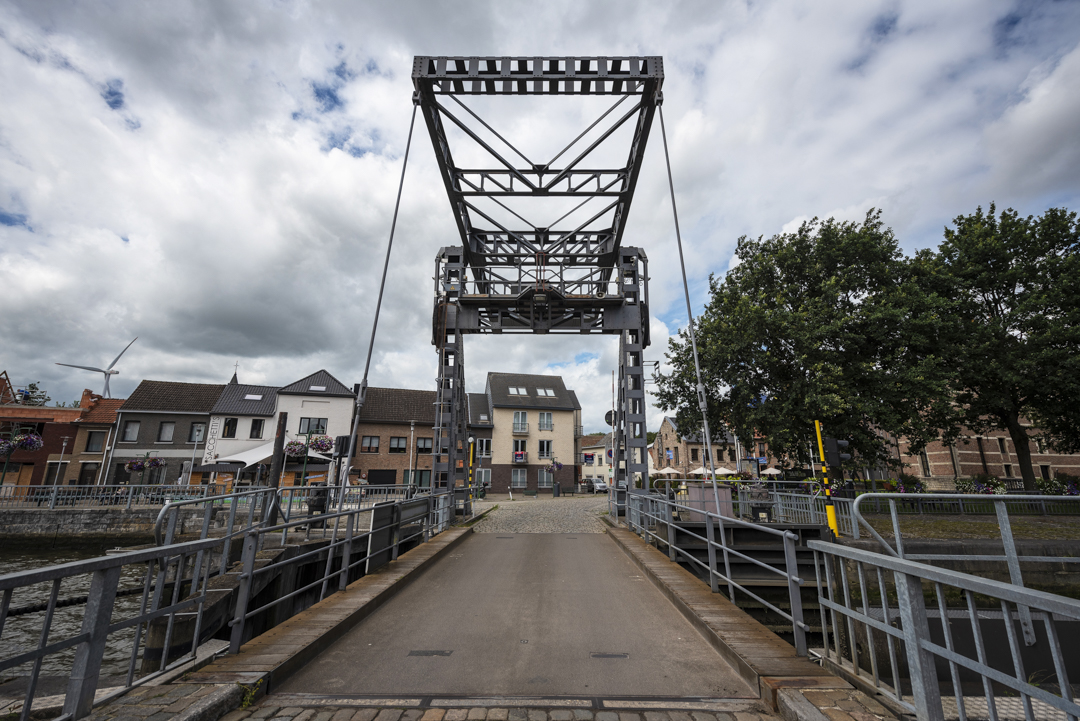
I don’t think I’ve ever been to Willebroek – not even to the infamous dancing Carré. Let alone I knew of the existence of Klein-Willebroek (“Small Willebroek”). This is a minuscule town of no more than a couple of streets, right across the Rupel facing Boom. They have their own little quay full of boats with an old lock leading to the river. Because the allied forces crossed the bridge to liberate Antwerp here (thanks guys!) an original Sherman tank was left behind to commemorate the occasion. Klein-Willebroek is one of the more idyllic places in the area (it’s technically not part of the Rupel Region, but is right next to it). You can get here in no time on the ferry and it’s right next to the cycling route along the water. This makes it the ideal stop to get a good lunch. If you’re feeling exceptionally famished, have a look at Sachetti’s. This is a tavern where they’ll serve you a massive plate fit for a whole family of hungry hungry hippos, even if you just wanted a light salad. Bon appetit!
8. Marvel at street art on the Yellow Brick Road

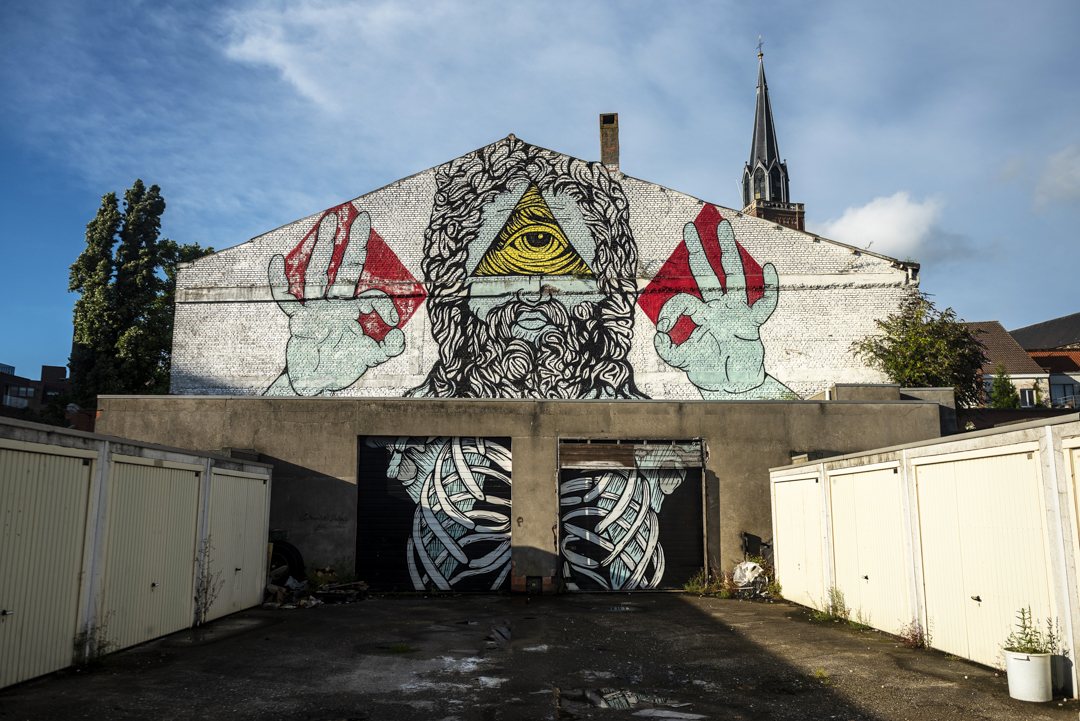

There’s a surprising amount of street art to be found in the Rupel region these days, and we have just one man to thank for it. Kanter Dhaenens is an artist from Boom who had to take his kids to school every day, on a road so depressingly bland it left him with two options: to either do something about it, or jump into the river and end it all. Luckily he decided on the first option, and called a couple of his street art friends to get to work. The result of his project was called The Yellow Brick Road (yes, from Wizard of Oz, you movie maniac you) and comprises dozens of works all over the area: from psychedelic animals to lifelike portraits of local celebrities. You’ll need quite some time to discover all of them.
What to do in Boom: practical information and staying in the Rupel region

We had a good night’s rest at B&B De Schorre in Boom, logically located next to the domain it shares a name with. This B&B only has one room – a studio for long term stays is being finished in the basement – and is run by Bruno: a nice man and an accomplished Pokémon trainer. The bedroom is right under the roof and comes with airco, two beds, a TV corner and a bathroom with mood lighting. Breakfast is great and plentiful. Lovely stay. www.brunosbnb.be
Want to know more about the rest of Scheldeland, of which the Rupel region is but a small part? Click here: www.scheldeland.be.
Need more info on the Rupel Region as a destination? Follow this link: www.toerismerupelstreek.be.
Looking for some other trips close by? Read my articles on the Port of Antwerp, Mechelen, Leuven, Viroinval or the Frisian Isles.










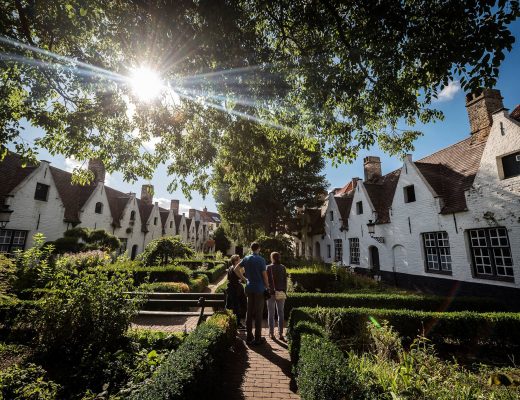

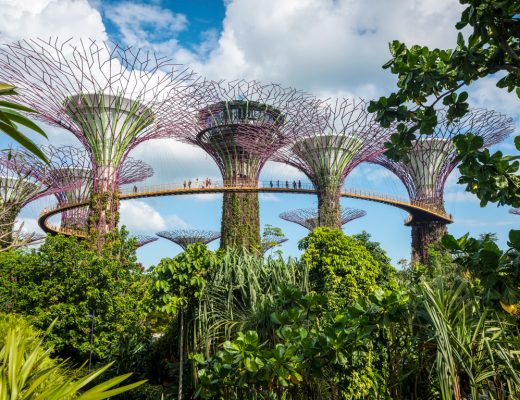

12 Comments
Ramael Marc
August 19, 2021 at 7:38 pmTof artikel , mooie foto’s. Ook alweer de moeite om eens naar toe te gaan. Top .
Jonathan Ramael
August 20, 2021 at 10:22 amMerci! Ver is het niet he. 😉
Sarah
August 26, 2021 at 10:52 amAls trotse bewoner van de zwaar onderschatte Rupelstreek en een nog trotsere Noeveriaan heb ik zeer genoten van deze mooie impressie! Dank je wel ;-).
Jonathan Ramael
August 26, 2021 at 11:08 amMerci Sarah, was een keileuke trip! 😉
Sarah
August 26, 2021 at 11:30 amen keileuk om wonen ook. Het is triest hoe Boom steevast negatief in het nieuws komt. Ik vind je schrijfstijl ook heerlijk, ga je andere trips met plezier ook eens lezen ter inspiratie voor mijn eigen tripjes. Leuke ontdekking, jouw blog. Veel succes nog!
Jonathan Ramael
August 26, 2021 at 11:33 amYeey! Een nieuwe fan! ^^
En komt Boom vaak slecht in het nieuws? :p
Sarah
August 26, 2021 at 5:19 pmDaar ga ik liever niet op in ;-). Tot volgend jaar op Tommorowland, dan!
Sarah
August 26, 2021 at 5:21 pmoeps, sorry, Tomorrowland, uiteraard (LOL). Ik ga stoppen met je te spammen nu ;-)! Maar ik ga wel wat reclame maken voor je blog bij mijn reisvrienden.
Jonathan Ramael
September 2, 2021 at 2:30 pmMercikes! 🙂
Guido Goyvaerts
February 13, 2022 at 9:41 amvia de website van Toerisme Rupelstreek zijn een heleboel toffe wandelingen in onze streek te ontdekken w.o. Nen Nielse Oemweg, Klinkaertroute, Steenbakkersroute, enz.
Zo zijn talrijk gehuchten met mix van oud en nieuw op een leuke manier te ontdekken. Tof verslag van jou trouwens Jonathan.
Jonathan Ramael
February 13, 2022 at 3:51 pmMerci Guido, gaan we eens bekijken! 🙂
Niet vergeten stemmen he. 😉
https://www.belgiantravelblogawards.be/audience-choice-award
Anna
June 4, 2022 at 3:37 pmLeuk artikel.
Maar wat met de PFAS vervuiling aan de oevers van de Rupel (bvb Boom) ??